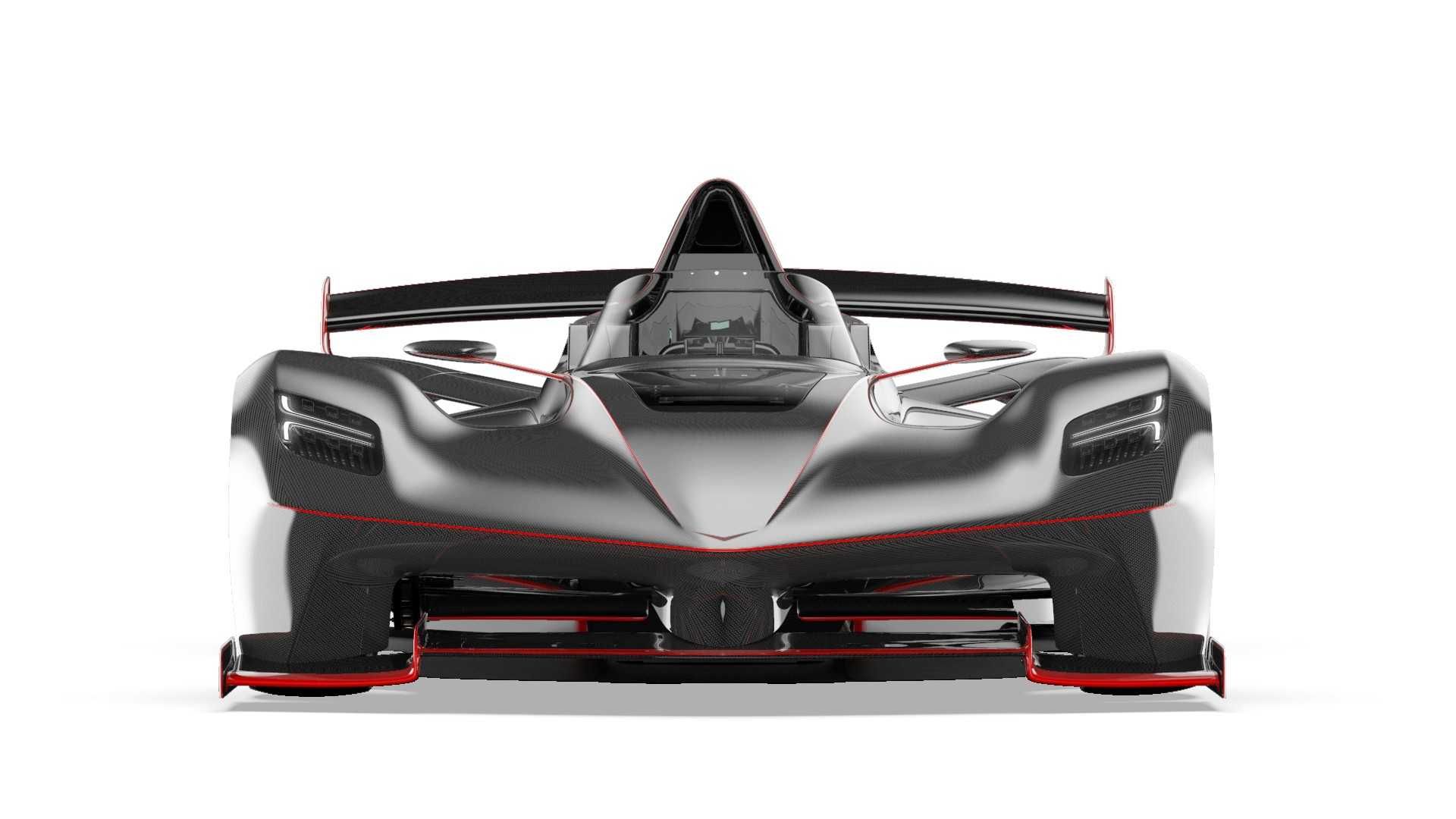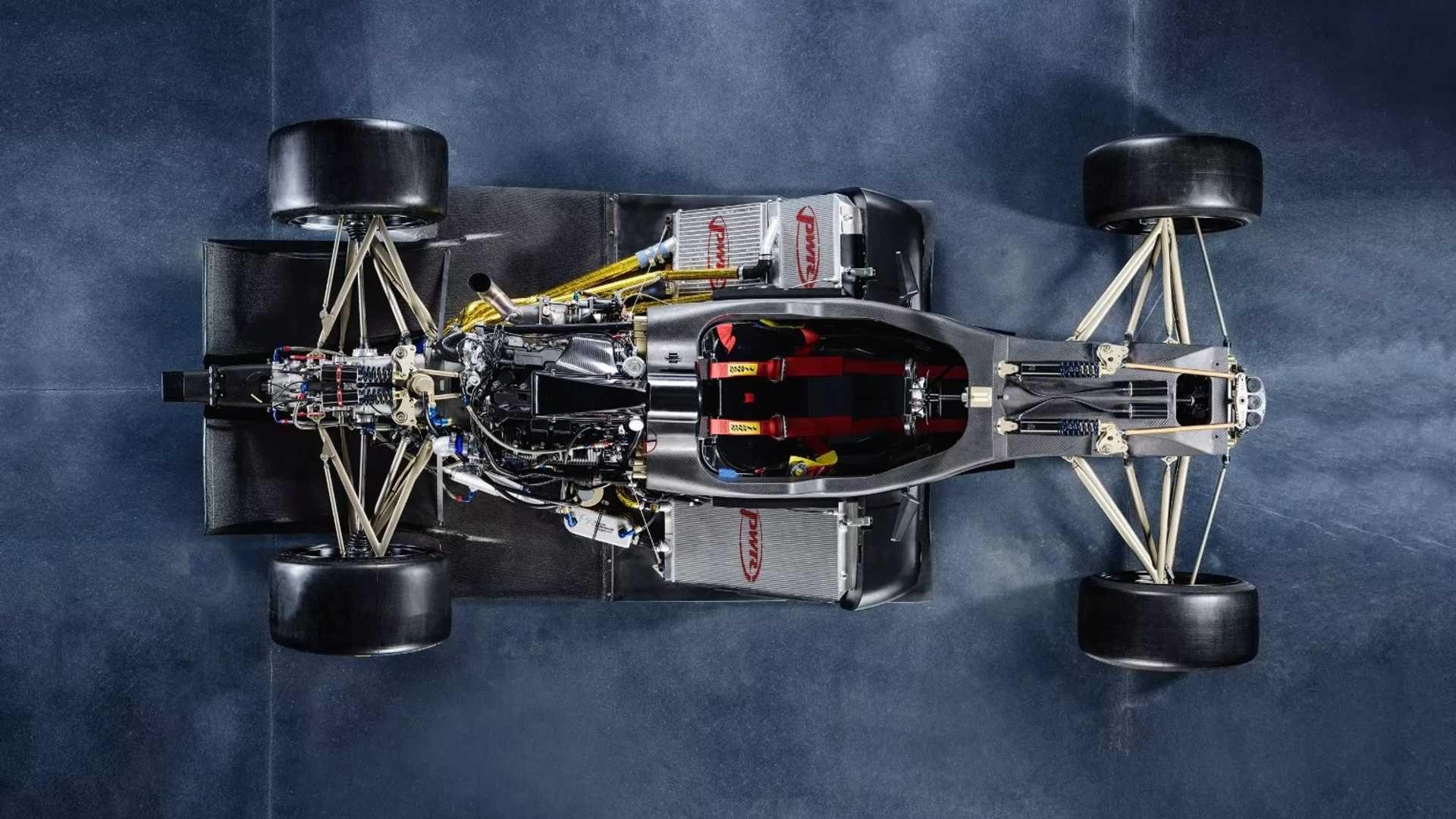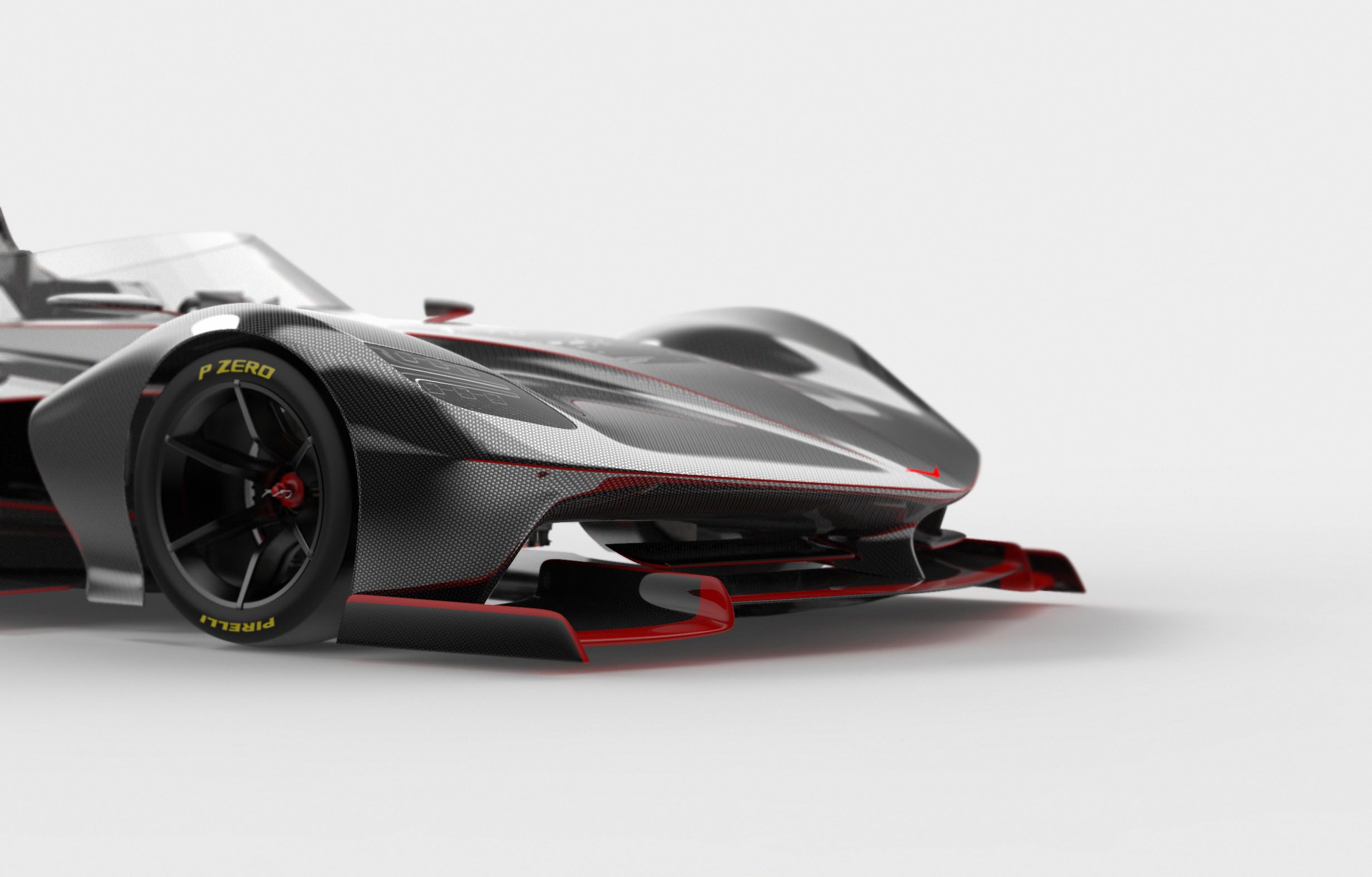The world is brimming with wealthy people and, although you may not notice it, every year more and more millionaires pop up around the globe. Most of them like exotic and expensive cars and at least some of them love cars that can take them extremely fast around the track. There's finally an American alternative for these people: the 560-horsepower Vandal One R with its 1,223-pound curb weight and 1,760 pounds of downforce. It looks like an F1 car with wings, has an FIA-grade monocoque, and costs significantly less than other track-only cars.
If you want to go to a road course and be quick, you have a variety of options, depending on your budget and your preferences. If your preferences include being able to drive said car to and from the track, you could choose an Ariel Atom, a Caterham, a BAC Mono, or the latest road-legal Vuhl from Brazil. If, however, you have the money to also buy a state-of-the-art trailer for your track day-only car, you could strive and find a Ferrari FXX K for sale, a Pagani Zonda R, or maybe a McLaren P1 GTR. But none of these offer the open-cockpit thrills of the Vandal.
The Vandal One-R is an American, Circuit-Only Beast That Promises to Vandalize Your Senses
As you've probably figured out from the introduction, when you're on the market for a car that obliterates the tarmac of your local road course, there's plenty to choose from - especially if you live in Europe. However, there's now a manufacturer from the U.S. that plans to raise a few eyebrows in this niche that's previously been dominated by whatever the Ferrari FXX program had to offer or the odd Zonda R, Maserati MC12 Corsa, and whatnot. The Vandal, as it's called, "was conceived to be the most advanced performance vehicle in the world," according to manufacturer.
That's a risky claim to make as a new automaker launching your first product, so let's see what we've got.
This chassis is built in North Carolina and then gets shipped to Troy where the rest of the car's bits are bolted to the chassis. These bits include the lithe carbon fiber body and the Honda Performance Development (HPD) engine.
The design itself is quite unique in that it looks like an open-wheeler with added bodywork like fenders, a nose cone section, and rear wheel arches as well. You'll notice that the Vandal does have headlights, on either side of the pointy nose that's supported by that central pylon connected to the sizeable splitter with huge endplates and flaps that direct air through the underbody tunnels.
The Vandal even has sidepods mounted on the flat floor. These collect some of the air gathered by the splitter as well as air flowing along the side of the vehicle and scoop it into the engine bay.
Once these are off you'll be able to marvel at the naked Vandal. You'll see the pushrod suspension front and rear - with inboard dampers in the front - and anti-roll bars, the 2.0-liter Honda engine pumping out either 340 horsepower in the Vandal One or 560 horsepower at 9,000 rpm in the Vandal One R.
The whole thing weighs in at just 1,223 pounds, 60 pounds lighter than a BAC Mono, and with the intricate aerodynamic package completed by that enormous rear wing, it generates in excess of 1,760 pounds of downforce, 30% of which is generated in the front. The Vandal comes with a data acquisition system thanks to a plethora of sensors that can tell you everything the car is doing. You can have telemetry read-outs and, according to the manufacturer, "the world’s first remote driver coaching app and program." The system, 12-sensor strong, can tell you everything about brake position, damper travel, throttle activation and position, boost pressure, brake pressure, and more.
If you're interested, you can already pre-order your Vandal now.
What Else is Out there in The World of Track Day Cars?
First off, let's take a look at some of the cars that could offer a similar experience, namely cars that lack a roof and, frankly, don't offer much bodywork elsewhere either. The one car that seems to look the most like an open-wheel is the Ariel Atom. Last year, we talked about the Atom 4, the latest iteration of the famous track day car that's also, somehow, road legal - at least in Europe. It's, basically, an all new-car with only the clutch, brake pedals, and the fuel cap being carried over from older Atoms. The improved chassis has been beefed up, and the car is now 15% stiffer than before.
If you want an even faster Atom, you can go for the 3.5R that has a wing out back on top of the engine and a wing in the front as well, to balance things out. It also had similar sidepods to the Atom 4, but it offers more power: 350 horsepower. However, torque is down wit just 243 pound-feet on tap. The engine itself is still a 2.0-liter IVTEC one from Honda and, with the R weighing just 1,220 pounds (three less than the Vandal), it can go from 0 to 60 mph in 2.6 seconds. The downside? When launched five years ago it cost the equivalent of $135,000 while the Atom 4 costs less than $60,000.
Moving on, there's the BAC Mono, an obvious choice since it also only has room for one person - you, the driver. It weighs just 1,278 pounds and is powered by Monotune-prepped 2.5-liter engine four-pot that churns out 305 horsepower, up from the 280 ponies deployed by the old, 2.3-liter Cosworth engine.
If, though you do have friends, but they aren't of the opinion that a car like the Atom that cradles them in tubes is a good idea for a fun ride, you have at least three choices: the Vuhl with its 2.3-liter Ford Ecoboost engine good for 400 horsepower, 370 pound-feet of torque, a 0 to 60 mph time of 2.7 seconds, and a top speed of 170 mph. All from a car that weighs just 1,455 pounds. Or you can choose the Magnum Mk. 5 that's a bit slower (3.2 seconds to 60 mph) but weighs less, barely 1,200 pounds. It still puts out 250 horsepower from a not-so-mild four-pot that revs to 11,000 rpm. It has a limited-slip diff, a six-speed sequential box, and is priced at $139,000 with only 20 slated for production each year.
The 2016 Zenos E10S is another tasty option.
Options with a fixed roof are multiple just as well
The main characteristic of all of the cars I've already talked about is that, apart from Ariel, they don't come from particularly well-known manufacturers or from manufacturers with a rich history of making sturdy, reliable, long-lasting cars. If you're after something less of an unknown quantity and you want to feel like you're behind the wheel of a car rather than a kart, drool over these if you may.
The Aston Martin Vulcan, arguably the fastest front-engined track-only car out there, right in the face of the Ferrari 599XX. The Vulcan is powered by Aston's tried and tested 7.0-liter, naturally-aspirated V-12 and it puts out 820 horsepower and 590 pound-feet of torque. That's a lot and, given the Vulcan's comprehensive aero kit, it will decimate tarmac anywhere you go. Aston also offers an AMR Pro version that has an even bigger rear wing, extra winglets on the nose, an more. Only 24 units have been made, and it's safe to assume it's crazy expensive as the standard Vulcan now trades hands for about $3.4 million, up by $1.1 million from its original MSRP.
Sticking with Aston Martin, the company's hypercar co-developed with Red Bull Racing, the Valkyrie, will spawn a track-only AMR Pro version of its own. It looks far more like a spaceship than the Vulcan does, and it will probably be faster around a track too. It's still powered by a V-12 but, this time, it's a unit developed by Cosworth that's rated at 1,300 horsepower. 0 to 62 mph will take just 2.5 seconds and, according to Aston Martin, "the single-minded pursuit of top speed has never been part of the Valkyrie ethos, yet even in high-downforce track configuration the AMR Pro is still capable of hitting 225 mph." Oh, and it only weighs 2,205 pounds and will be able to pull as much as 3.3 G’s in the corners. It's great, then, that the Valkyrie has an enclosed cockpit that ensures your head won't fly off mid-corner... a nice thing to keep in mind after spending $4 million on one.
Of course, if Aston isn't your thing you can go for a McLaren P1 GTR or Senna GTR, a Ferrari FXX-K, the Brabham BT62 or the Fittipaldi EF7. All of these offer bucketloads of power (at least 600 horsepower), look incredible, put down lap times that boggle belief and will cost you millions. It's up to you and your wallet if you can go for one of these or if you'll take one of the open-top buzzards, but it's clear that the Vandal deserves to be given a chance against all these guys.
Vandal One R specifications
|
Curb weight |
1221lbs (555kg) |
|
Width |
1850mm |
|
Wheelbase |
108.1in |
|
Front track |
1560mm |
|
Rear track |
1510mm |
|
Monocoque |
Carbon Fiber with FIA-Compliant Front, Rear and Side Crash Structures. FIA-Spec Survival Cell with Neck Braces |
|
Engine |
Honda Performance Development 2.0L Turbo putting out 340 to 560 horsepower depending on package. |
|
Horsepower |
560hp (R), 340hp (Base) |
|
Suspension |
F1-Style Pushrod Front and Rear with JRi Adjustable Racing Dampers, Anti-Roll Bars and Custom Spring Rates. |
|
Wheels & Tires |
Optional 18×10″ Front Wheels with 265/35/18 and 18×12″ Rear Wheels with 325/30/18 Pirelli Slicks |
|
Body |
Carbon Fiber Body with Integrated Aero, Optimized through CFD. Quick Latching and Removable Sections. |
|
Transaxle |
Sadev 6 Speed Full Sequential with Paddle Shift System and Autoblipping with 40ms Shifts. Reverse gear. |
|
Brakes |
Monoblock 4-Pot Aluminum Calipers with Vented Rotors. Capable of over 2Gs of Braking Force. |
|
Data Acquisition |
Full Data Acquisition System with 12 Sensors and Optional Camera. |
Further reading
Read our full review on the 2019 Ariel Atom 4.
Read our full review on the 2016 BAC Mono.







